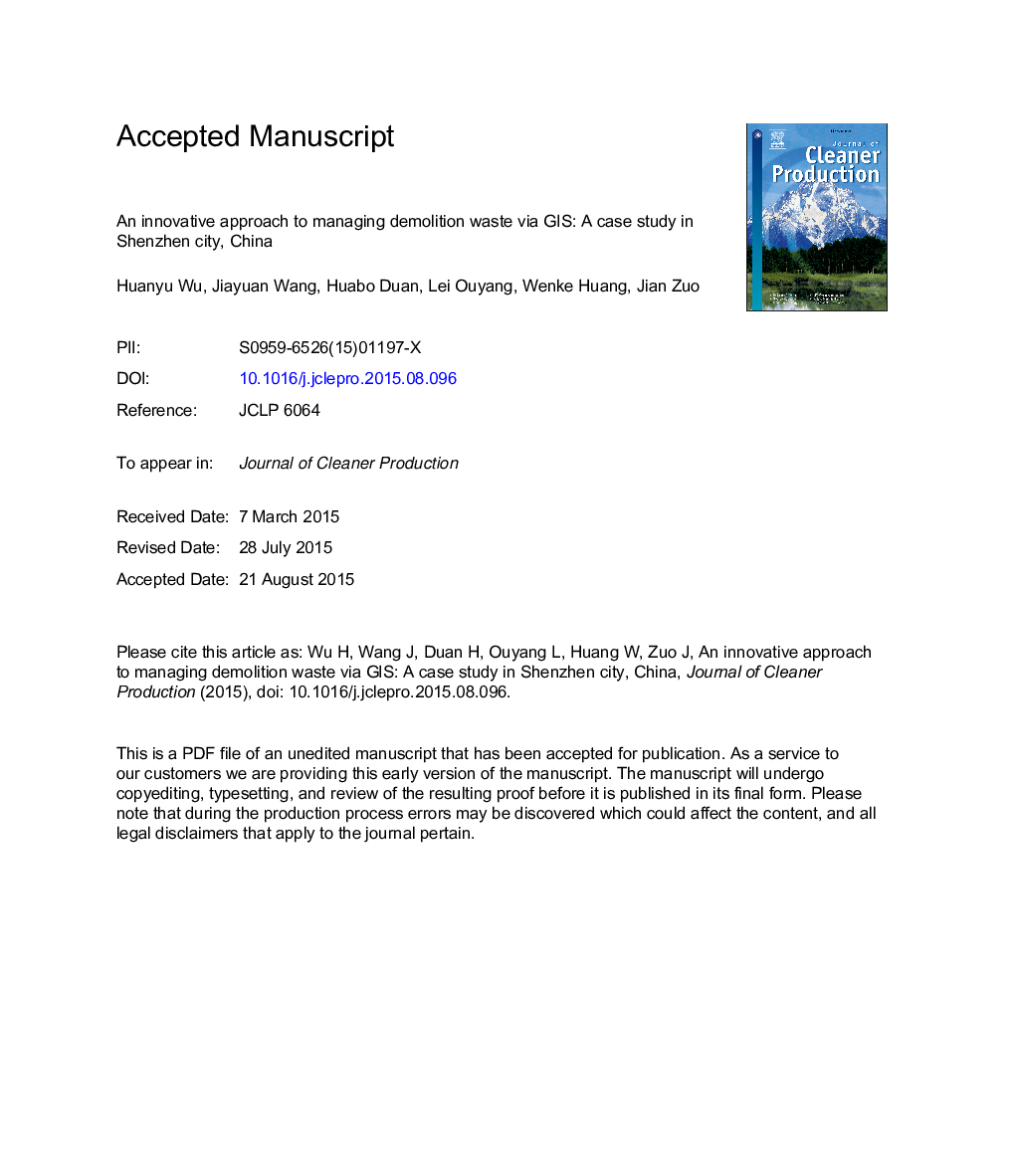| Article ID | Journal | Published Year | Pages | File Type |
|---|---|---|---|---|
| 10688057 | Journal of Cleaner Production | 2016 | 49 Pages |
Abstract
A large amount of demolition waste was generated due to the rapid urbanization. Prior to designing corresponding management measures, it is imperative to understand the amount, composition, and flows of the generated waste. This study proposes a novel approach to quantifying the demolition waste from generation to final disposal and, consequently, formulates corresponding strategies to managing the demolition waste, by using spatial and temporal dimensions in the Geographic information system. Specifically, a GIS-based model is proposed and consequently applied to a case study. Results show that over 135 million tons of demolition waste will be generated in the Nan Shan District between 2015 and 2060, and the recycling potential is valued at $ 6072 million under the optimistic scenario. By contrast, under the worst-case scenario, over 54 million m3 of land area which equals to approximate $ 218 billion could be needed for landfill. Compared to the worst-case scenario, the optimum scenario would reduce the amount of waste to be disposed in landfills by 80% and increase the value of recycling by 65%. The results revealed that, as a rapidly developing city, Shenzhen would likely experience the peak in the generation of demolition waste. Therefore, it is imperative to improve the recycling rate as it helps to raise the potential economic benefits and to reduce the landfill demand. This research is innovative in terms of the systemization, visual representation and analysis of quantifying the demolition waste flows via a novel method. The findings about the generation trends, economic values and environmental effects provide valuable information for the future waste management exercises of various stakeholders such as government, industry and academy.
Related Topics
Physical Sciences and Engineering
Energy
Renewable Energy, Sustainability and the Environment
Authors
Huanyu Wu, Jiayuan Wang, Huabo Duan, Lei Ouyang, Wenke Huang, Jian Zuo,
